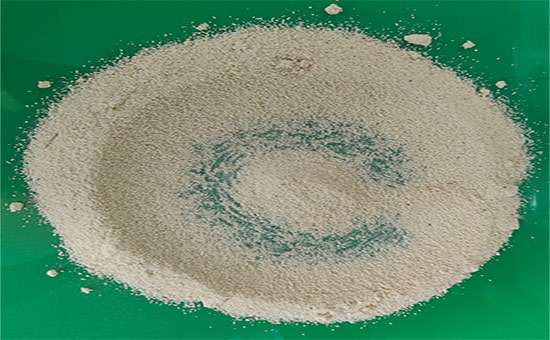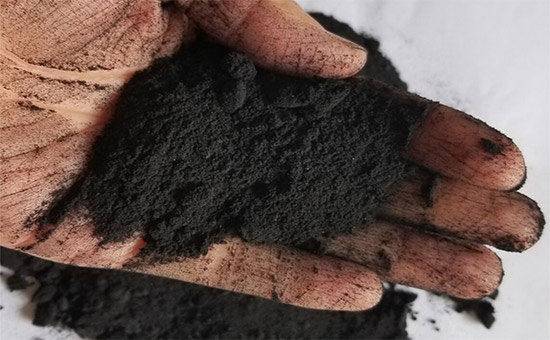Desulfurization rubber powder is desulfurization reclaimed rubber powder, also known as powdered recycled rubber, which is processed by vulcanized rubber powder using a suitable desulfurization method. In actual production, the vulcanized rubber powder is made of a chain-like rubber macromolecular chain through cross-linking to obtain a stable cross-networked structure, resulting in poor surface activity and poor compatibility with the polymer matrix; The desulfurization and regeneration treatment of rubber powder to prepare desulfurization rubber powder can significantly improve the compatibility among rubber powder and polymer matrix.
Recycled rubber is a product of waste vulcanized rubber after treatment, it has a certain plasticity, and it is easy to process, blend and re-vulcanize with or without adding natural rubber or synthetic rubber.
The desulfurization and regeneration process can be completed either by breaking the cross-linking bonds of the vulcanized rubber, or by breaking the main chain or by the combined action of the two processes. Through desulfurization, waste rubber powder can convert three-dimensional cross-linked, insoluble and non-meltable thermosetting polymer materials into two-dimensional structure, soft, plastic, more viscous, low modulus, processable and revulcanizable powdered recycled rubber, which has many similar properties to virgin rubber.
In actual production, desulfurization rubber powder can be divided into chemical desulfurization rubber powder, microbial desulfurization rubber powder, microwave desulfurization rubber powder, ultrasonic desulfurization rubber powder, etc.

Chemical desulfurization rubber powder: The production process of chemical desulfurization is to use organic disulfide or mercaptan as a desulfurization reagent to break the cross-linking bonds of waste rubber under high temperature and mechanical force. In addition to this, some inorganic compounds are also used as desulfurization reagents. Common desulfurizers include organic disulfides and mercaptans, inorganic compounds, etc. For example, 10-30 mesh waste tire rubber powder is suspended in solutions such as toluene, naphtha, benzene and cyclohexylamine, and its desulfurization and regeneration can be achieved by using sodium metal.
Microbial desulfurization rubber powder: Microbial desulfurization technology is to use the sulfur-eating characteristics of some microorganisms existing in nature to oxidize and decompose the sulfur in the vulcanized rubber under aerobic conditions, so as to achieve desulfurization. The study shows that the rubber particles of aircraft tires are suspended in bacteria-water suspension, and after 40 days of reaction under aerobic conditions, all the sulfur in the waste rubber is converted into sulfate.
Microwave desulfurization rubber powder: Microwave desulfurization is a non-chemical, non-mechanical one-step desulfurization and regeneration method, which is essentially a kind of thermal degradation, and the microwave action leads to the slippage of the molecular chain, so that the temperature of the vulcanized rubber quickly rises to 260-350 °C, and the chain is broken. Theoretically, by precisely adjusting the energy and frequency of the microwave action, the heat generated can only destroy the S-S and C-S bonds in the powder, while leaving the C-C bonds undamaged.

Microwave desulfurization only has a significant thermal effect on sulfur vulcanized polar rubber, and its application in non-polar rubbers such as NR, SBR, BR is limited, and it is mostly used in ethylene propylene rubber and butyl rubber vulcanized rubber.
In actual production, other desulfurization processes can also be used for the desulfurization and regeneration of waste rubber powder, such as ultrasonic desulfurization;Different desulfurization processes are suitable for different waste rubber powders, and the physical properties of desulfurization rubber powders are very different.
Exclusive original article [commercial authorization] reprint, excerpt and excerpt in any form are prohibited without written authorization. Focus on Hongyun rubber: learn the process formula and raw material technology of producing rubber products from recycled rubber to help you reduce costs and increase profits